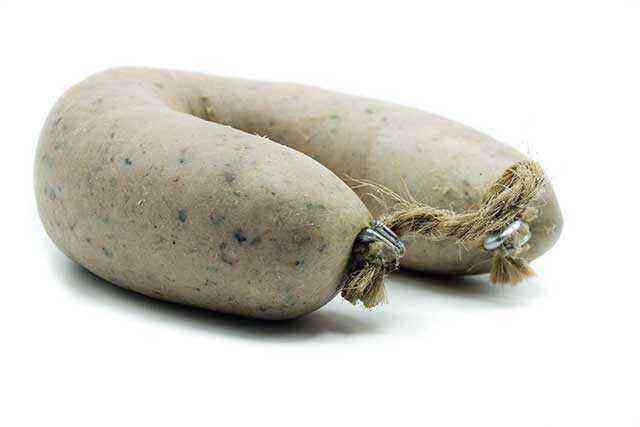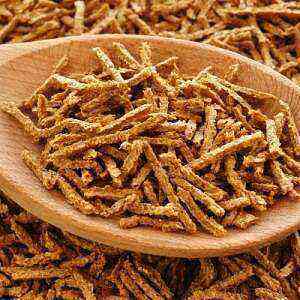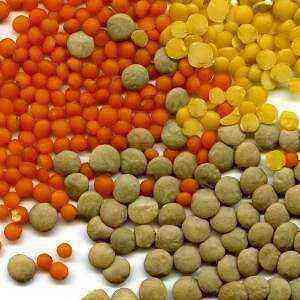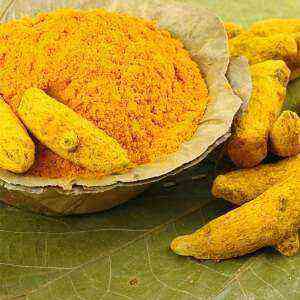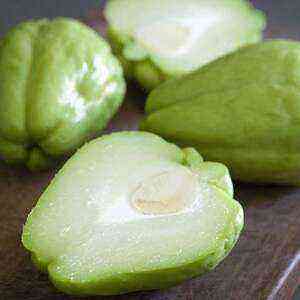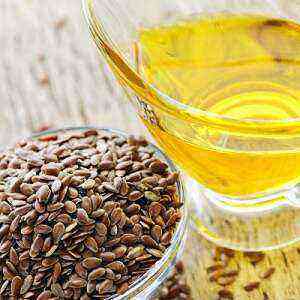
Triglycerides of linoleic acid (ALA) are the building blocks of the whole body, from which it synthesizes vital forms of omega-3 acids (eicosapentaenoic and docosahexaenoic). Interestingly, the human brain and nervous tissue are 70% composed of them. The human body is not able to independently synthesize these compounds, therefore, they must be supplied with food every day for the full functioning of organs and systems. ..
Types
Flaxseed oil is the leader in the number of therapeutic and prophylactic properties among vegetable oils. The energy value of the product is 844 calories per 100 milliliters. To maintain health, nutritionists recommend taking it 15 milliliters on an empty stomach half an hour before meals, or at night 30 minutes after dinner.
To feel the result, it is important to use flaxseed oil every day, at least 2 a month, without skipping tricks. Otherwise you will not notice the change.
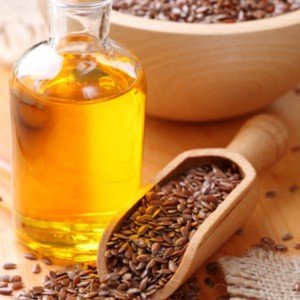
- Unrefined. It is the most useful product, retains its original properties (smell, taste, color), quickly deteriorates and gives fus during prolonged storage. Unrefined oil is “freed” from mechanical impurities by centrifuging, filtering and settling.
- Hydrated. It retains the beneficial properties of unrefined, in addition, it does not give sludge (fus), as it undergoes preliminary treatment with water to remove phosphatides, which give a precipitate.
- Refined. It undergoes mechanical and chemical cleaning with alkali, which kills valuable free fatty acids. Refined linseed oil is stable during storage, has no sediment, has a weak taste and smell, and has a neutral color. It is of no value to the human body.
- Refined bleached deodorized. In addition to alkali treatment (refining), the oil is additionally subjected to deodorization, bleaching. The result is a discolored product. Bleaching is carried out with clay, followed by filtering the oil through activated carbon. Like the previous form, it is devoid of useful substances, its properties are inferior to unrefined and hydrated.
Linseed oil is obtained by crushing refined flax seeds. Unrefined is produced by pressing, refined – by pressing and extraction. Interestingly, 2 milliliters of the product contains the body’s daily requirement for omega-3 fatty acids. In addition, it is a storehouse of tocopherols (E), vitamin K.
Refined oil has a greenish-yellow color, clear, transparent, without sediment, with a slight taste and smell. Unrefined is divided into 2 varieties, in which the permissible content of volatile substances and moisture should not exceed 0,3%. The taste and smell of unrefined linseed oil is clean, without bitterness. Permissible sludge by weight for the first grade – up to 0,05%, second – 0,1%.
Avoid surrogate drugs and counterfeits, they can worsen your health ..
Chemical composition
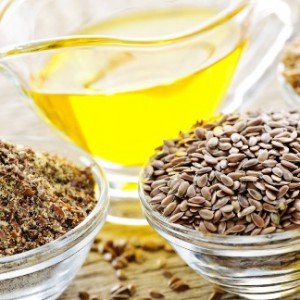
- α-linolenic acid (considered to be the precursor of omega-3) – 53,4 gram (45 – 70%);
- linoleic (omega-6) – 14,3 grams (12 – 24%);
- oleic (omega-9) – 20,198 grams (10 – 21%);
- palmitoleic (omega-7) – 0,10 grams (0,05 – 0,1%);
- palmitic – 5,10 – 5,30 grams (4,1 – 4,4%);
- stearic – 3,40 – 4,10 grams (3,3 – 3,8%);
- margarine – 0,10 grams (0,05 – 0,1%);
- Behenic – 0,10 grams (0,05 – 0,1%);
- arachin – 0,10 grams (0,05 – 0,1%);
- lignoceric – 0,10 grams (0,05 – 0,1%).
The bulk of saturated fatty acids in 100 grams of the product reaches 6 – 18%.
Interestingly, in terms of omega-3 acids, squeezing from flax seeds is superior to soybean oil and fish oil.
In addition, it is a valuable source of phytosterols, which are dominated by beta-sitosterol (100% of the daily value is concentrated in 515 milliliters), campesterol (184,5%), stigmasterol (92,9%), delta-5-avenasterol (107,3 , XNUMX%).
Thus, linseed oil is classified as a female product. It does not contain oxalic acid, carbohydrates and purine bases. It includes lignans – substances that reduce the level of “bad cholesterol”, normalize the functioning of the heart system. These compounds exhibit antimitotic, estrogen-like, antioxidant activity.
Table No. 1 “Nutritional Value of Flaxseed Oil”
Components
Content in 100 grams of product, milligrams
Phytosterols 689,0 Beta-sitosterol 206,0 Campesterol 98,0 -105,0 Unsaturated fatty acids 87,898 Delta-5-avenasterol 59,0 Stigmasterol 30,0 – 35,0 Saturated fatty acids 9,9 Gramisterol 6,7 Water 0,1 , 0,1 Protein XNUMX
Table № 2 “The chemical composition of linseed oil”
Name
Nutrient content in 100 grams of product, milligrams
Vitamins
Gamma-tocopherol 28,8 – 52,0 Delta-tocopherol 0,95 – 1,6 Alpha-tocopherol 0,5 – 1,2 Beta-tocopherol 0,6 Choline (B4) 0,2 Phylloquinone (K) 0,0093
Macronutrients
Phosphorus 1,5 Calcium 1,0
Canadian nutritionist Robert Kundi believes that this product is prescribed to revolutionize human history for preserving youth in the future. farmer-online.com.
Useful Properties
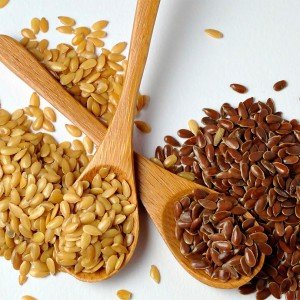
- Lowers cholesterol, normalizes blood pressure, protects against heart disease (angina, hypertension, prevents repeated heart attacks), reduces blood viscosity. It makes blood vessels more elastic, improves metabolism.
- Relieves inflammation with fibrocystic mastopathy, gout, lupus. Reception of linseed oil eliminates swelling of the joints and relieves sudden severe pain in them. In addition, omega-3 fatty acids increase the absorption of iodine.
- It relieves constipation, hemorrhoids, diverticular disease. The crushed flaxseed is rich in fiber, helps cleanse the gastric sacs, prevents the development of a possible infection, relieves inflammation, and normalizes the digestive tract. The oil has antiparasitic properties, removes colitis, gastritis, and heals the liver. The product prevents the formation of kidney stones, the appearance of gallstone disease.
- Improves the condition of the skin, is used to treat psoriasis, sunburn, acne, eczema. Essential fatty acids (EFAs), which are part of linseed oil, eliminate red itchy spots, soothe irritated dermis. In addition, EFAs reduce the secretion of the sebaceous glands, the abundance of which clogs the pores and causes acne.
- Maintains healthy hair, nails. Lack of unsaturated fatty acids causes problems with the scalp: dandruff, psoriasis, eczema. Omega-3 strengthens fragile nails, prevents their separation, eliminates the hair from dryness, dullness, prevents the cross section of the tips.
- Improves the transmission of nerve impulses, eliminates tingling and numbness in the limbs, increases the effectiveness of treatment of Parkinson’s disease. NLC prevent nerve damage in multiple sclerosis, diabetes mellitus.
- Relieves the symptoms of menopause, endometriosis, menstrual pain. Flaxseed oil contains lignins, normalizing hormonal balance. In addition, NLC improves uterine function, helps eliminate problems with infertility, prevents the formation of prostaglandins, which cause bleeding during menstruation.
- Slows the aging process, reduces the risk of cancer (prostate, colon, breast).
- Resists the occurrence of atherosclerosis, hypertension, stroke, blood clots.
- Fights male infertility, impotence and prostate diseases (prevents its inflammation, swelling).
- Stimulates the metabolism, improves the performance of weight loss, reduces appetite.
- Accelerates the recovery of muscle tissue after intense sports and ligaments after sprains.
- Facilitates the course of pregnancy, a positive effect on the formation of the brain of the unborn child.
- Increases the effectiveness of treatment of diseases of the nervous system, lungs and bronchi, thyroid gland, kidneys, bladder.
Linseed oil is widely used in cosmetology. On its basis, preparing nutritional compositions for hair, with vitaminized, bactericidal, rejuvenating, softening properties.
To prevent stretch marks, it is recommended to rub linseed oil into the skin of women, especially during pregnancy, when the dermis is stretched due to the growth of the fetus. When applied regularly (with massage movements), it moisturizes, nourishes and gives a radiant appearance to the body. During feeding, it is applied to the nipples and breasts to protect against the appearance of small cracks, loss of skin elasticity. To accelerate the healing of striae and increase the effectiveness of anti-cellulite massage, linseed oil is added to the cream farmer-online.com...
Hazardous properties
With uncontrolled use, even the most useful product can harm human health. Flax seed oil is rapidly oxidized (when heated and interacting with air), deteriorates from exposure to sunlight. Because of this, it is not recommended to heat treat it and keep it open for a long time. Otherwise, free radicals harmful to the body are formed in the oil.
Thus, the main drawback of the product is the short shelf life.
Possible adverse reactions of the body when exceeding the dose:
- Deterioration of blood clotting.
- Diarrhea, while flatulence is not observed.
- Allergic reactions: respiratory failure, rash, edema.

- taking painkillers and antidiabetic drugs;
- pregnancy and hormonal imbalance;
- taking medicines whose action is aimed at reducing cholesterol, blood thinning;
- cholecystitis;
- polyps of the appendages and uterus;
- hepatitis;
- lactation;
- chronic pancreatitis;
- hypertension;
- increased blood clotting;
- liver obesity, impaired cell structure;
- taking hormonal contraceptives, antidepressants;
- biliary tract diseases;
- atherosclerosis.
Unripe flaxseed pods cause body poisoning, and raw seeds contain cyanide (in small doses). The substance negatively affects the state of human health. In small doses, it causes a burning sensation in the mouth, agitation, anxiety, increased blood pressure, shortness of breath, dizziness, profuse sweating. High doses of cyanide are dangerous with instant loss of consciousness, death ....
How to use?
Flaxseed oil is recommended to be consumed with food without heat treatment. It goes well with fermented milk drinks, juices, cottage cheese, vegetables. The oil is stored in a glass opaque container, in tightly corked form, in the refrigerator. After opening the container, the product is consumed within 5 to 7 days, otherwise pathogens begin to multiply actively in it.

Flaxseed oil for weight loss
It is an ideal tool for the correction of body weight, because it contains omega-3,6,9 fatty acids, which are actively involved in metabolism, promoting the burning of subcutaneous fat.
For weight loss, linseed oil is consumed according to the following scheme: on an empty stomach 20 minutes before breakfast and in the evening 20 minutes after dinner, 5 milliliters. In this case, the dose should be gradually increased and brought to 15 milliliters at a time. People with stool problems should take 200 milliliters of warm water after taking the oil. If desired, the product can not be consumed in its pure form, if it causes concern and side effects from the body. It is permissible to add it to vegetable salads, mix with honey, fruit syrups, juices, and other oils.
The main condition is not to subject the product to heat treatment, since this destroys its useful properties.
If you decide to lose weight with flaxseed oil, do not expect a quick result. “Medicine” will not have any impact at one time. To achieve a noticeable effect (minus 2 – 5 kilogram), linseed oil should be drunk regularly, without skipping tricks, at least 2,5 – 3 of the month. In addition, without giving up harmful products and systematic physical exertion, it will not be possible to lose those extra pounds.
The following are excluded from the diet of a dieter: fatty, fried foods, red meat (pork, beef), mayonnaise, sauce, wheat flour, muffin, confectionery, marinades, sugar, convenience foods, carbonated sugary drinks, alcohol. Forbidden products are replaced with vegetables, poultry, fish, fruits, natural freshly squeezed juices.
Of the physical exercises, cycling, jogging, cardio, fitness, swimming, yoga, aerobics are welcome.
After a course of losing weight, do not give up the use of flaxseed oil. In the absence of contraindications for use, it is added to the daily diet as a source of polyunsaturated fatty acids 1.
Linseed oil for face
Every hostess knows that this product is an effective means of getting rid of skin defects: wrinkles, acne, peeling, pigment spots.

- activates the production of collagen, renews skin cells, promotes tissue repair;
- tightens the shape of the face;
- moisturizes and improves the smoothness of the dermis;
- relieves inflammation, irritation;
- fights acne;
- protects cells, tissues from the adverse effects of environmental factors;
- improves the complexion;
- improves overall skin tone;
- accelerates the treatment of bruises, burns, warts, psoriasis, shingles;
- eliminates dryness, peeling;
- fights shallow wrinkles;
- heals wounds, bruises, bruises, cuts and cracks.
When applied externally, flaxseed oil nourishes, moisturizes, softens and rejuvenates the skin, so the product is indicated for the care of wrinkled, flabby, dry, fading derma. With internal use, it suppresses inflammation in the cells, normalizes metabolism, saturates them with nutrients.
Indications:
- acne, acne;
- first age changes on the skin;
- wrinkle prevention;
- brightening freckles, dark spots;
- dryness, flaking and feeling of tightness of the dermis.
Methods of application:
- Consumption inside. Skin is an indicator of human health. If you have problems with the dermis should look for the cause in the body. What do acne on the face? Rash on the nose indicates the presence of hidden problems with the pancreas, on the nose – with the liver, cheeks – with the stomach, temples – with the gall bladder, forehead – with the small intestine or bladder, chin – with the pelvic organs, above the lips – with the heart .
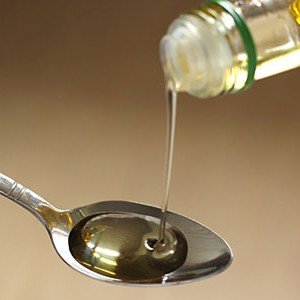
- Masks. They have a nourishing, rejuvenating effect on the skin, relieve dryness, flaking. In order to avoid worsening the situation, flaxseed oil should be used with care to care for oily dermis. In order not to enhance the work of the sebaceous glands, select recipes that include protein or citrus.
- Wiping the skin. To improve the tone of the face and make the skin silky, linseed oil is applied to cleansed skin with massage movements, at least 1 an hour before bedtime. Otherwise, the product will not have time to be absorbed, in the morning there will be swelling.
- Dot use. It is used to eliminate microcracks and acne. In this case, the tampon is moistened in linseed oil, which is used to treat problem areas on the skin (warts, bruises, irritations).
- Warm compress. It nourishes, improves the condition of dry, sensitive skin. How to use: moisten a soft cloth in oil, apply on face, wait 10 minutes.
Face Mask Recipes:
- For oily skin. Cleans from various pollution, dries acne, tightens pores. Principle of preparation: 15 grams of fresh baker’s yeast diluted in the same amount of milk. Stir the mixture to a pasty state. Let the mask stand for a quarter of an hour, then add 5 milliliters of lemon juice and flax oil. Apply the prepared mass to the face for 30 minutes, then rinse with warm water.
- For normal skin. It nourishes, softens the dermis. Flaxseed oil is recommended as a replacement for night cream. Apply at night light patting movements, after removing makeup, do not wash off.

- For dry and aging skin. Tightens the dermis, deeply nourishes and moisturizes. The principle of preparation: очист peel the avocado, puree, add 5 milliliters of honey and linseed oil to the resulting mass. Mix the contents, apply on the face, wait 30 minutes. After the specified time, rinse off the mask with warm water.
- Cleansing mask. Ingredients: lemon juice (10 milliliters), kefir (15 milliliters), linseed oil (5 milliliters), flour (5 grams). Thoroughly mix the components, evenly distribute on the surface of the face, leave for 15 minutes, rinse.
On the basis of linseed oil prepare scrub and lotion for acne. These funds cleanse the dermis from contamination, sebaceous excretions, relieve inflammation, have a tonic, moisturizing effect. For the preparation of peeling flax oil is mixed with oatmeal in equal proportions. Mask-scrub is applied with light massage movements to cleansed skin, gently rubbed, washed off with warm water. It is recommended to use 1 – 2 once a day.
To make an acne cleansing lotion, combine linseed oil, yolk, cream, lemon juice, camphor alcohol, and honey. Shake the finished lotion vigorously, pour into a glass container, store sealed. The resulting product is recommended to wipe the previously cleansed skin every day. 1.
Linseed oil for hair

Flaxseed oil prevents hair loss, restores their damaged structure, gives shine, softness and elasticity, returns strength.
Masks for keeping your hair healthy:
- For greasy hair. Normalizes sebum production, relieves dandruff, cleans hair and pores from contamination. To prepare the mask, the following ingredients are mixed: kefir with 1% fat (200 milliliters), linseed oil (30 milliliters). The resulting mixture is rubbed into the scalp, spread over the entire length of the hair, wrapped with a plastic bag on top, wait 40 minutes, wash off with warm water. With regular use (2 – 4 once a week), the head of hair takes on a fresh, tidy look, rarely gets fat.
- For dry hair. In this case, flaxseed oil is used without adding additional ingredients. A nourishing mask is applied to the scalp with massage movements, rubbing the product in for 10 minutes, then spread along the hair length. The top of the head is covered with polyethylene and warmed with a towel. Means to keep on the head 1 – 2 hours, depending on the degree of damage to the hair. In severe cases, the mask is made at night, then washed off with warm water.
- For hair growth. Stimulates metabolic processes in the root zone. To prepare the mask, flaxseed, castor, sea buckthorn oils are diluted in the same amount (in 15 milliliters). Rosemary essential oil (5 drops) is added to the mixture. The mask is applied on the head, hair, covered with cellophane, wrapped with a scarf. An hour later, the product is washed off with warm water.
For the treatment of brittle, split ends, flaxseed oil is mixed with castor oil and applied to the damaged areas of the hair. To enhance the effect, strands are held over the steam during application. This contributes to the disclosure of pores, better nutrition of brittle tips.
For “feeding”, strengthening the hair structure and giving it a natural shine, linseed oil (50 milliliters) is mixed with glycerin (30 milliliters), essential compositions (lavender oil for normal, dry hair type, grapefruit or eucalyptus – for oily). The procedure is done at night. The course of therapy is 1 month 1.
Conclusion
Flaxseed oil is a source of vitamins B, E, K, phosphorus, calcium, omega-3,6 unsaturated fatty acids. Due to its rich chemical composition, it has a nourishing, anti-inflammatory, regenerating, moisturizing effect on the skin. And when used internally, it boosts general immunity, stimulates the body’s cleansing, lowers cholesterol, protects nerve cells from damage, and prevents brain damage that develops with age. With regular use, flax seed oil improves concentration, memory, reduces the risk of depression, schizophrenia. This is a real panacea for women, because it normalizes hormonal levels, supports youth and beauty of skin, hair, nails.
With diabetes, it lowers glucose levels and prevents the formation of diabetic polyneuropathy. Increases the effectiveness of the treatment of skin diseases (dermatitis, eczema, psoriasis). In addition, the composition of flaxseed oil includes the natural antioxidant thioproline, which absorbs nitrates and nitrosamines, so it is recommended to add it to vegetable dishes grown using fertilizers.
Despite its beneficial properties, the intake of the product should be limited to people with individual intolerance, pregnant and lactating (only under medical supervision), people with pancreatic dysfunction, and diseases of the gallbladder.
In the absence of health problems, the recommended daily intake of flaxseed oil, to compensate for the shortage of NLC in the body, is 15 – 30.
Sources of




